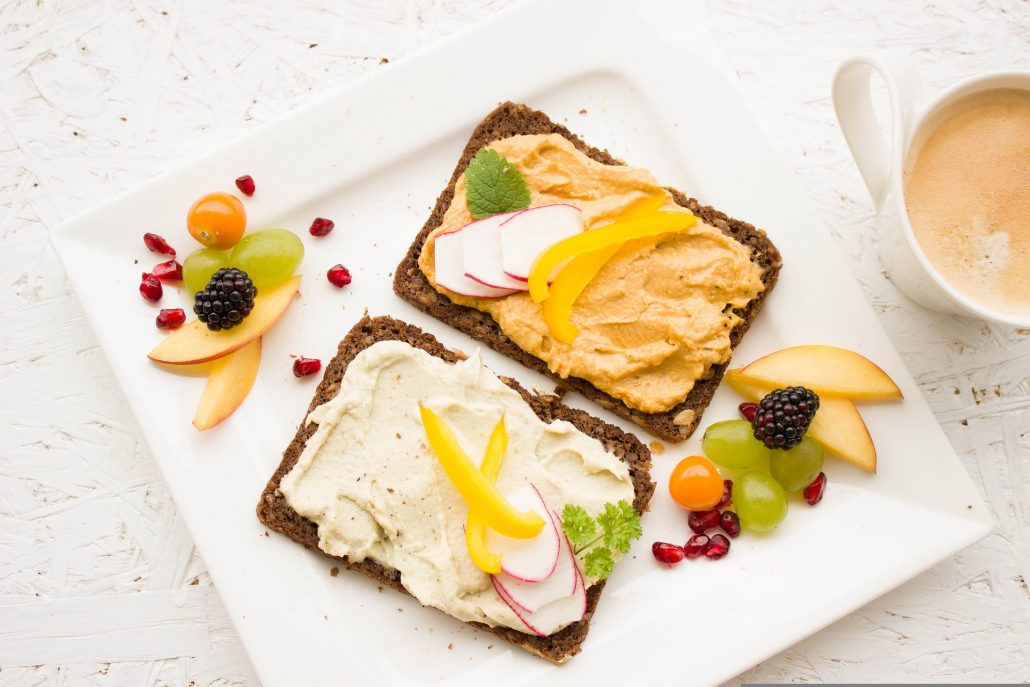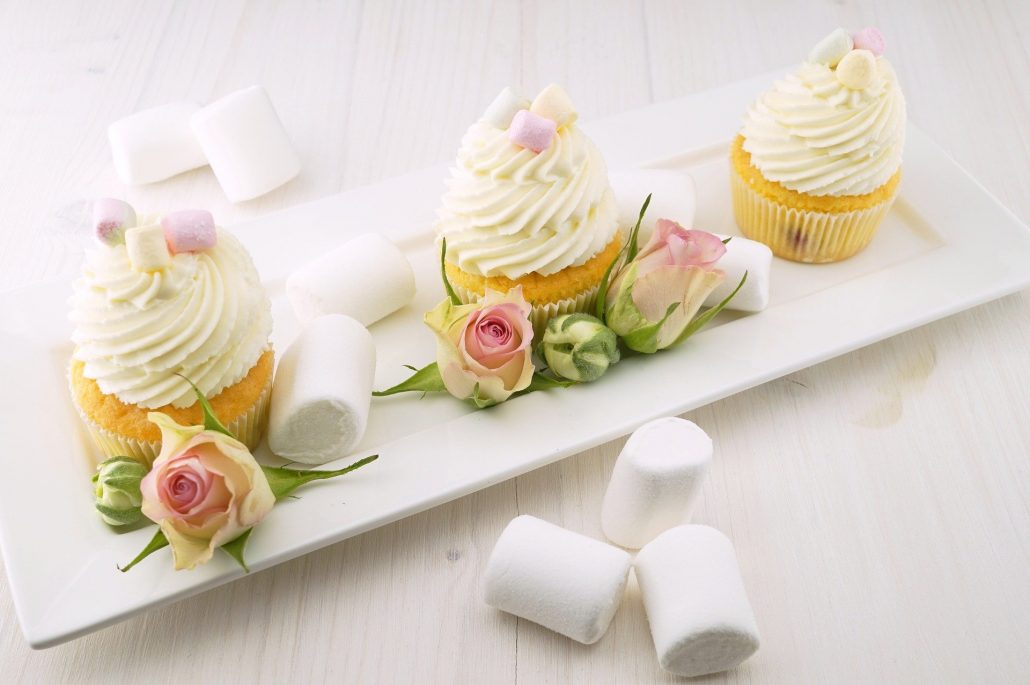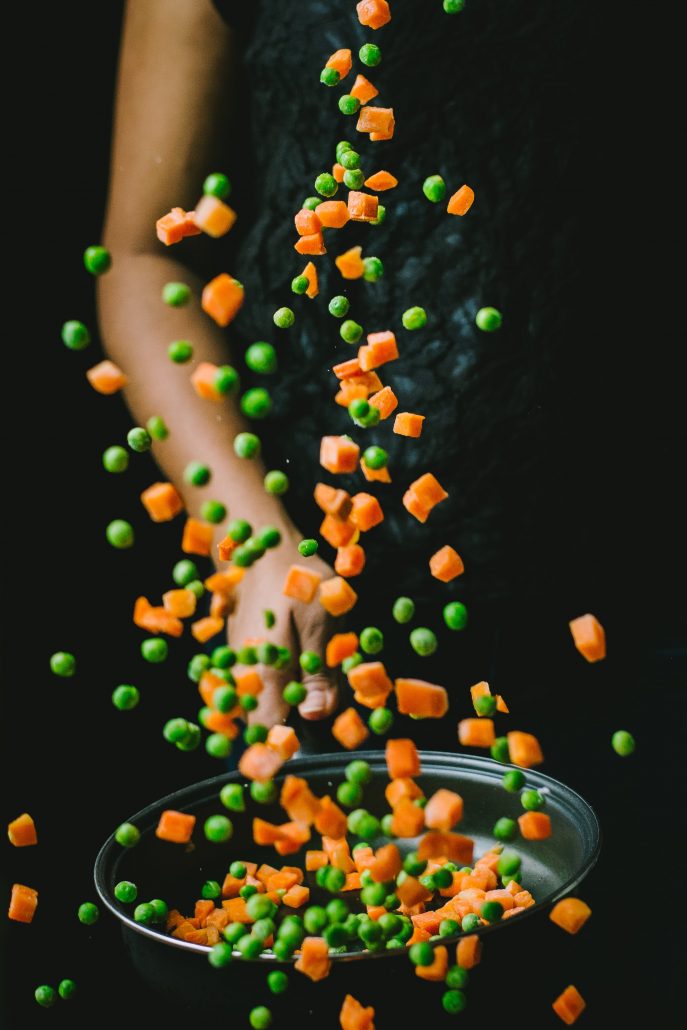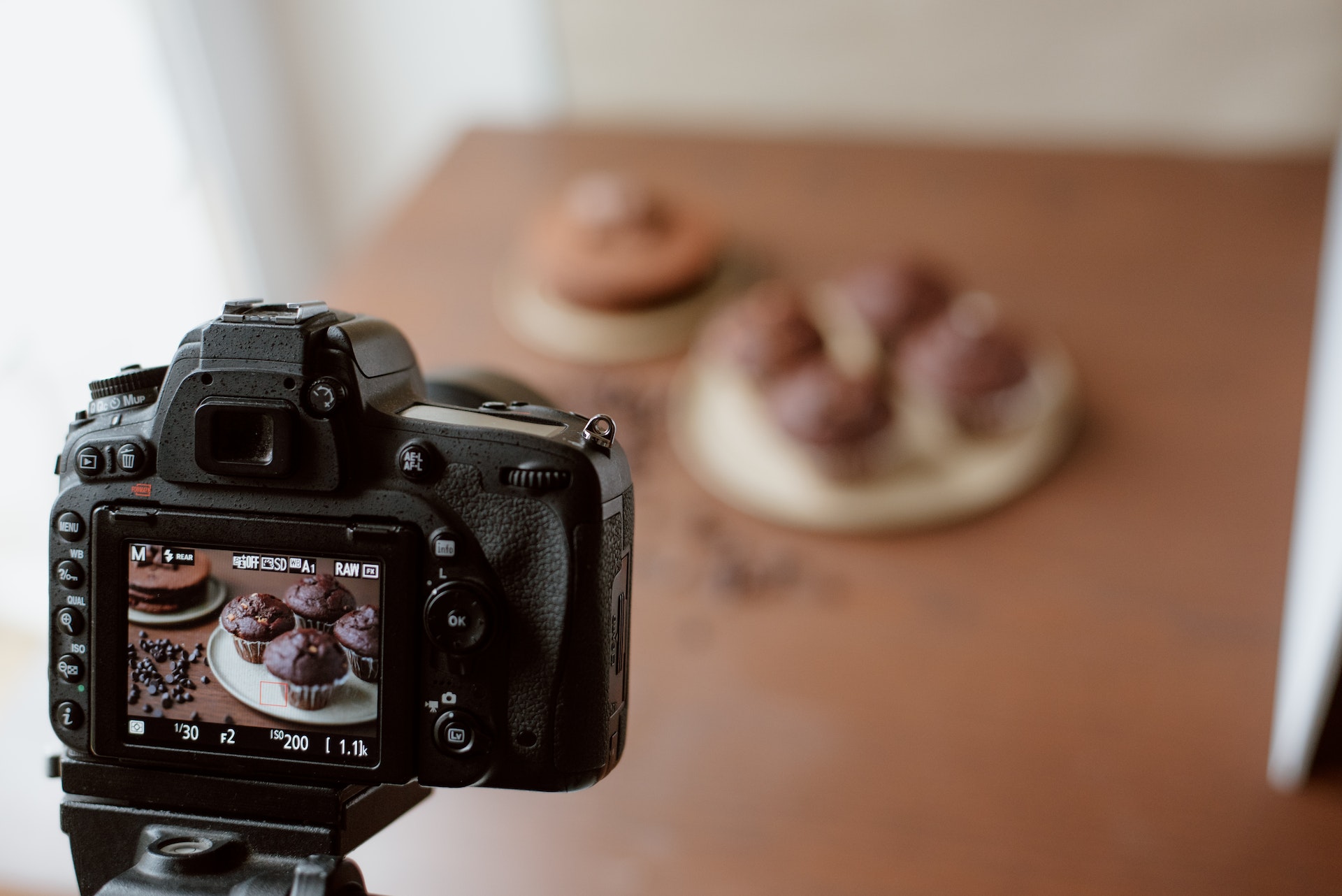
Food Photography After looking at a picture of delicious food, don’t you feel hungry?
I suppose we all share that feeling.
Food Photography is essential, regardless of whether you are a professional food photographer, a restaurant owner, or just a regular person because almost everyone enjoys trying out the delicious food they see on social media and sharing pictures of it.
This guide is meant to teach you everything you need to know about photography and show you creative ways to get better at it so you can take pictures of mouth-watering food.
Contents
Why Do You Need to Take Food Photography?
The people and the purposes for which they are being used determine the need for food photographs. Therefore, in order to comprehend the need for it, we need to know who would require food photographs the most.
Let’s take a look at the top users of food images to see why they might be needed.
Café Proprietors:
Restaurant owners are the primary consumers of food images. To make their dishes popular with customers, they need to advertise them. Additionally, they must use food shots of a high enough quality to entice customers to try the food in order to increase sales.
Some significant needs are-
- Enhance your brand’s image
- Acquire more credibility and trust.
- Create a menu that looks good.
- To advance on the eatery sites
- Boost sales.
Chef:
Photographs of food are also essential for chefs. If they want to work at a well-known restaurant or demonstrate their abilities as a professional culinary artist, they need to have a portfolio. In addition, they can demonstrate their originality in creating a variety of dishes through professional food images.
Some significant needs are-
- Make a portfolio for them.
- Enhance their trustworthiness.
- Encourage their culinary prowess and originality.
Food Content Creators:
Numerous food content creators, including food reviewers or influencers, food bloggers, and food vloggers who produce cooking videos, exist on social media platforms like Facebook, Instagram, and YouTube.
Because food bloggers who share recipes on social media must use appealing food images to entice viewers to view their content, all of them are somewhat dependent on food photos. Similarly, food vloggers and forces to be reckoned with the need to utilize enticing pictures on their pages and as thumbnails to advance their recordings.
Some significant needs are-
- Make use of their social media content.
- arouse the interest of viewers in their content.
- regain viewers’ faith in their culinary prowess.
- Utilize the content of restaurants to promote them.
Food Photographers:
For business, professional, and personal use, restaurant owners, chefs, and even the general public rely on food photographers to capture appealing food images. In addition, photographers need food images to build their portfolios and demonstrate their creativity and work experience in order to work with restaurants and other clients.
Some significant needs are-
- Make your career successful.
- Enhance their proficiency’s credibility.
- Enhance their image.
- Exhibit their originality.
Food lovers or ordinary people:
Last but not least, everyday people go to various restaurants to sample food or commemorate special occasions. It’s possible that some people will also feel the need to post photos on social media of their home-cooked meals or food from restaurant visits. As a result, they need to know how to take good food pictures in order to share their special moments with their loved ones.
Some significant needs are-
- to make social media posts.
- to let people know about the restaurant and the quality of the food.
- to preserve special ceremony memories.
What Makes a Great Food Photo?
Even though it may seem like a good camera and lens are necessary for photography, there are many other factors that help produce great food images. We have broken down those components so that you can quickly comprehend them.
- One of the main elements is the utilization of appropriate lighting. Your photographs will become overly bright or dull if you use the wrong lighting.
- You need to find ways to avoid shadows that could be caused by harsh lighting. Therefore, you must use soft light or diffusers to soften the light.
- The way your food is arranged and how you use angles also affect how it looks. Some foods look appealing when viewed from the sides, from above, from a lower vantage point, and from a close-up perspective.
- The degree of visual noise in an image is determined by how the food is presented. The background and plating make up the style of presentation. The centerpieces and background ought to go well with the main subject. Most importantly, there needs to be some breathing room in the frame.
- The texture of food is the most important aspect. As a result, the image should be made as striking as possible by making the texture as obvious as possible.
- Color is everything in food images. Your image will look more appealing the brighter it is. As a result, the photos’ vivid colors and high saturation can make viewers hungry just by looking at them.
- The image will appear flat and uninteresting if it lacks the depth of field, so it should have one. In order to give the food an appealing appearance, depth of field can also be used to emphasize particular aspects.
How to Shoot Food Photography – Easy Guide
1. Choose the Right Camera
The quality of the photos you take of your food items is affected by the kind of camera you use. Today, there are many different kinds of cameras, including DSLRs, smartphones, mirrorless cameras, and many more.
When looking for the best camera for food photography, think about well-known brands like Nikon, Canon, Fujifilm, Sony, and many others. You can compare the features and customer reviews of their various digital camera models to find the one that best meets your requirements and your budget.
On the other hand, if you want to take pictures with the camera on your smartphone, you could look into purchasing an iPhone, a Google Pixel, or a high-quality Android phone from Samsung.
2. Camera Settings
To achieve a good balance between the brightness, color, and other aspects of the image, you must use the appropriate camera settings. Auto, Macro, Landscape, Night mode, Shutter priority, Aperture mode, and other lighting-related settings are built into digital cameras. Nonetheless, these auto modes here and there make overexposed or underexposed pictures.
As a result, it’s best to manually adjust the camera’s settings so that you can get images with a good exposure that match your lighting setup. When manually adjusting the camera’s settings while photographing food items, consider the following:
Aperture:
The hole in the middle of the lens that lets light into the camera is called the aperture. Depending on the lighting conditions, this hole can be adjusted to control the flow of light. The size of the opening is communicated as f-stops. The typical aperture is between f/1.4 and f/32.
Keep in mind that a smaller f-stop (f/32) is achieved with a wide aperture and a larger f-stop (1.4) with a narrow aperture. Use a large f-stop to block excess light when photographing in well-lit conditions, while a smaller f-stop makes the image brighter in dark conditions.
Most importantly, the aperture can be adjusted to control an image’s depth of field. You can use a wider or larger aperture, such as f/2.8, to focus on the food item while blurring the background if you want it to stand out from the background.
A smaller aperture, on the other hand, will allow you to keep both the food item and the background in focus. If necessary, you can begin with f/8 and gradually increase it to f/11. The ideal aperture for achieving a deep depth of field is typically between f/8 and f/11.
ISO:
The ISO is the name given to a digital camera’s light-sensitive sensor. You ought to change the ISO relying upon your lighting conditions. In low-light conditions, use a higher ISO, such as 400-800, to produce more exposed images. However, keep in mind that using a higher ISO will also result in visible noise or a grainy image.
The best ISO for a food photoshoot in a well-lit environment is 100 because it will produce less grainy and well-exposed images. Be that as it may, you can change it on the off chance that it doesn’t exactly measure up for your lighting arrangement.
Shutter speed:
The speed at which a camera’s shutter opens and closes is referred to as its shutter speed. It determines the amount of light that a camera’s sensor will be exposed to. The image’s sharpness is also impacted.
You can use both faster and slower shutter speeds in various ways to give your food motion. For instance, you can use a slower shutter speed to achieve a smooth motion blur when adding frothy milk to your coffee or pouring maple syrup onto pancakes.
Then again, you can utilize a quicker screen speed to freeze a second, for example, sprinkling salt on a steak or sprinkling drink things like water, juice, wine, and so on. However, compared to images taken with a faster shutter speed, your image may have a darker exposure.
However, if the camera is used without a tripod, using a slower shutter speed can result in blurry images. Therefore, when adjusting the shutter speed to prevent camera shake, take into account the focal length of your lens. That is, for a 50mm focal point, your base shade speed ought to be 1/50s, however, you ought to keep it at 1/100s for better quality.
White balance:
To guarantee the exact shade of food, changing the white balance is additionally significant. The auto-balance function of the camera has a hard time accurately balancing the colors because restaurants typically employ lights of varying intensities.
This problem can be solved with a white or gray card or object. To tell your camera to change the white balance, simply take a picture of a white or gray object in your lighting setup and use that as a reference.
3. Photography Lens
You should pay attention to the lens as well as the camera. You might want to think about using different kinds of lenses because food shots need to be taken from different angles. Prime lenses, zoom lenses, macro lenses, and tilt-shift lenses are among the most frequently utilized lenses for food photography.
4. Choose the Right Tripod
It is a common misunderstanding that food still photography does not require a tripod. But the truth is that if you want the food to look crisp and clear, you need to use a tripod. Using your hands to control the camera can cause shaking, which can make the pictures blurry.
In addition, shooting food products or items from various perspectives, particularly overhead, is necessary. Because it becomes difficult to capture overhead or flat-lay shots of professional quality without a tripod, the only way to ensure the camera’s stability when doing flat-lay photography is to use sturdy, high-quality tripods.
5. Product Lighting setup
You must take into account both natural and artificial lighting when designing food photography settings. Working with food under natural light is a little more difficult than under artificial lighting, despite the fact that it enhances the food’s color. Therefore, artificial lighting is more practical.
Additionally, the most significant benefit of artificial lighting is that you can position and adjust its intensity to suit your needs when creating imaginative and vibrant food images.
The following section will help you design the lighting setup for your next shoot and determine the best lighting for food photography.
Natural Light:
Normal light can be viewed as the best light for a food photoshoot whenever utilized in a legitimate way. You will notice that the side that receives light has a washed-out effect while the other side is mostly in shadow if you place your food product in direct sunlight, which is harsh in nature.
Therefore, on a sunny day, you can place the food item in a well-lit shaded location rather than in direct sunlight. Your food product’s actual color, texture, shape, and other small details will be prominent in the photographs, which is a benefit of using a shaded location.
Artificial Light:
The following positions are possible for the artificial light sources in your food photography setup:
- One Lamp: Your food products can only be shot with one light. The light source needs to be 45 degrees in front of the food. Try to involve a white umbrella as a diffuser to consistently make the light delicate and spread.
- Two Lamps: When only one light is used, shadows are frequently produced. You can use two lights to get around this problem. Put two lights on one or the other side of the food item at a 45-degree point with an umbrella diffuser.
One of them will serve as your primary light, and the other will serve as a fill light. The fill light, which should be less intense than the main light, should be directed into the reflector with the main light facing the table’s back.
- Three Lamps: Three lights can be used in two different configurations.One light behind the food item can be used as backlighting in the first setup, and two lights of equal intensity can be positioned 45 degrees apart on either side of the food item. The food will be illuminated in all directions as a result of this.
In the second setup, you can position one light in front of the food item and two lights on either side of it, facing in opposite directions. The food item will have a more natural-looking appearance thanks to the reflected light from the side lights.
You can also use a lightbox in addition to these arrangements. You should use a lightbox to make your composition look simple and elegant, especially if you don’t want to add any distracting background. Using a lightbox eliminates the need for additional light diffusers or modifiers because the sheer sides act as their own light modifiers.
6. Accessories
To control the characteristics of the light, distribute it evenly, and create an illuminated environment for the food photoshoot setup, the following accessories are required.
Modifiers:
Light modifiers are profoundly pivotal to working on the lighting of your food photographs. It is frequently observed that your composition’s mood does not match the intensity of the light. At that point, you need to adjust the intensity by using modifiers. Additionally, natural light should be transformed into soft light through the use of modifiers.
To diffuse and even out the harshness of the light, you can employ modifiers such as scrims, umbrellas, softboxes, and beauty dishes. However, you can use additional modifiers such as snoots, barn doors, grids, and flags if you only want to control the light rather than soften it.
Reflectors:
A light reflector is yet another necessary item for creating a well-lit environment. Assuming you set your light source on one side of your food item, then, at that point, there are chances of having shadows on the opposite side of your item. Light reflectors should therefore be used to avoid this problem.
White foam boards can be used in a small studio for work. However, you can purchase high-quality reflectors like the Profoto collapsible reflector (120 cm), the Manfrotto Triflip 8:1 kit (75 cm), and the Selens 5 in 1 (60 cm), among others, for a more expansive setting or to convey a sense of professionalism.
Flash:
To make the settings appear brighter, you can use external flashes like spotlights and strobe lights. However, if direct flash is applied to the food item, it may obscure the texture. As a result, if you use an external flash, avoid pointing it directly at the food.
7. Photography Backdrop
Because viewers won’t be able to see your camera or other equipment in an image, backdrops are the most important part of any photography project. Instead, they will only be able to see the background and the product. Additionally, even if the food is delectable, it will not attract viewers if the background is unappealing.
If you want to shoot in a studio with a white background, you can use seamless white paper for the backdrops. You can likewise utilize wooden or marble ledges. If you want to give your photos a kitchen-like appearance, you can also use faux marble and faux wood backgrounds.
8. Composition
The first and most important aspect of creating a good food photograph is composition. Your food item might be the main attraction or a supporting component, depending on how you structure the composition. Therefore, you can use the following guidelines to make your composition striking:
The center frame:
In order to divide a camera frame into nine equal grids, two horizontal lines and two vertical lines intersect. Your food item should be in the central column of the central composition. When working with a single food item, like pouring honey on a stack of pancakes, this perfect symmetry is ideal.
The Thirds Rule:
The rule of thirds works well with nearly every kind of food. You should place your food item on one-third of the frame using this ruler, leaving the other two-thirds empty. Our eyes naturally gravitate toward the grid lines’ intersections. As a result, viewers are drawn to this position more readily.
Odds and Ends:
Using an odd number of food items in your composition is another useful style. When we see even numbers, our attention is typically diverted elsewhere. Therefore, you can arrange at least three items in a triangular shape or in a row to create balance in the composition. However, using just five to seven items will work as well, but the composition may become overly crowded.
The Brilliant Triangle:
Using the golden triangle rule is one of the best ways to make the viewer’s eyes move around the frame in a continuous loop. By arranging the composition in triangular shapes, you can convey movement.
You can do that by arranging your primary food item and other props in a triangular pattern. For instance, you might serve your main dish on a large plate, a dip or side dish in a small bowl, and a drink in a glass. They can be positioned in the frame to form a triangular pattern.
Another option is to divide your frame diagonally into two equally sized pieces and then right-angle divide the diagonals from the other two sides to form four triangles. As the image’s focal point, you should position your primary food items at the intersections.
12 Creative Food Photography Ideas & Tips to Get High-Quality Photos
Your ability to create visually appealing food images will be aided by the imaginative food photography ideas presented here.
1. Experiment with different angles and vantage points
It is essential to take the picture from a specific vantage point and angle that best depicts the food at its best in order to make it look appealing. Let’s look at some of the good vantage points and angles that can make your meals look better.
Positive aspects:
The vantage point is the location from which a photograph is taken. High angle, low angle, and straight angle are the angles you should consider when creating imaginative food visuals.
You have the option of stacking pancakes or raising the position of a cake stand for a cake to give them height. Give your food items a new look by putting them in these different positions to make them stand out to the viewer.
Flat-lay or overhead shot:
Due to the fact that almost every food item appears to be drooling in this perspective, this is one of the most common perspectives for food photography. Simply arrange your food items on a table or other flat surface and shoot from above.
This shot works best with food, especially pizza and other foods with toppings like noodles, pasta, salad, and charcuterie boards.
Straight or side shot:
Cakes, pancake stacks, and other foods with a height lend themselves well to the side or straight angle. In addition, you can replicate the juiciness and texture of a hamburger patty. In this kind of shot, you can also use props in the background to improve the composition. Take the shot from the level of the table for this.
Shots at 45 degrees:
For both flat and medium-height foods, 45-degree shots are ideal. You will get a view that is somewhere in between an overhead and a side view at this angle. To accomplish this, hold your camera at a 45-degree angle relative to the food item in order to obtain a view of its front side, top surface, and details on its sides.
Shots at 75 degrees:
A 75-degree shot is generally an above shot, however, you can see a touch of the side view. This kind of shot is great for shooting various drinks out of jars and glasses. The fundamental objective of this point is to show the top improvement as well as the state of the holder to give profundity to the picture.
2. Make use of vibrant colors

A viewer’s appetite can be completely destroyed by a bland, repetitive food image. Consequently, whether you are photographing fruits, vegetables, or other dishes, adding a splash of color will enhance the flavor and vibrancy of the images.
Normally, natural products, vegetables, and a few sweet things like macarons have lively varieties. Therefore, when photographing those items, color is not an issue. But for things like pasta, bread, meat, and other things to add a splash of color to foods that don’t come from nature with vivid colors, you’ll need some additional ingredients.
You can, for instance, add colorful ingredients like red, green, or yellow bell peppers, herbs, or vegetables like tomatoes, carrots, and so on to a bowl of pasta or soup to make it more appealing. along with the food item. However, you can use brightly colored crockery for dark items like spinach curry or chocolate.
You can use greens like salad, lettuce, and other vegetables to give the impression of being fresh. However, ensure that they are fresh. Additionally, you can use vibrant backgrounds to draw the viewer’s attention to the images.
3. Add some motion or action
When there is movement in the food pictures, they become more dramatic and exciting. You must use a fast shutter speed or use burst mode to take continuous pictures. There are a few ways to incorporate motion into your food photography.
In the air, food:
Making a food item appear more appealing by stretching it, pouring ingredients with a liquid consistency, or suspending it in the air all add movement to the images. You can evaluate this strategy in cases like pulling cheddar from a pizza, adding milk, egg, or sauce to the food, or throwing food in a skillet while cooking.
Sprinkling:
Another way to create delightful food images with motion is to sprinkle. This approach is typically utilized when working with foods like steak, cakes, and pastry. Salt can be added to steak, powdered sugar can be added to pastries, and edible glitter, sprinkles, or beads can be used to decorate cakes.
Splashing:
Splashing is the most common method for giving images life and motion. If your primary food item contains a liquid ingredient, you can create a splashing image. For example, you can make a splash by dropping a strawberry or raspberry from a height with a spoon or milk bowl.
Additionally, working with beverages makes creating a splashing effect much simpler. To achieve this, dynamic splashing images can be created by swishing the glass or pouring beverages into it from a height.
However, if you are working with solid foods like fruits and vegetables, you can drop them into a water-filled transparent jar. Creating a splashing effect is a lot of fun. To cause a disturbance on the liquid’s surface, all you need is a little imagination.
Dripping or melting:
Another natural phenomenon that gives an image of the appearance of motion is melting. It does a good job of making people salivate over the image. When photographing the ice cream, chocolate, cheese, butter, and a wide variety of other foods, the most common melting shots are taken. This also includes the dripping of water from a frozen beverage can or glass.
4. Add human touch
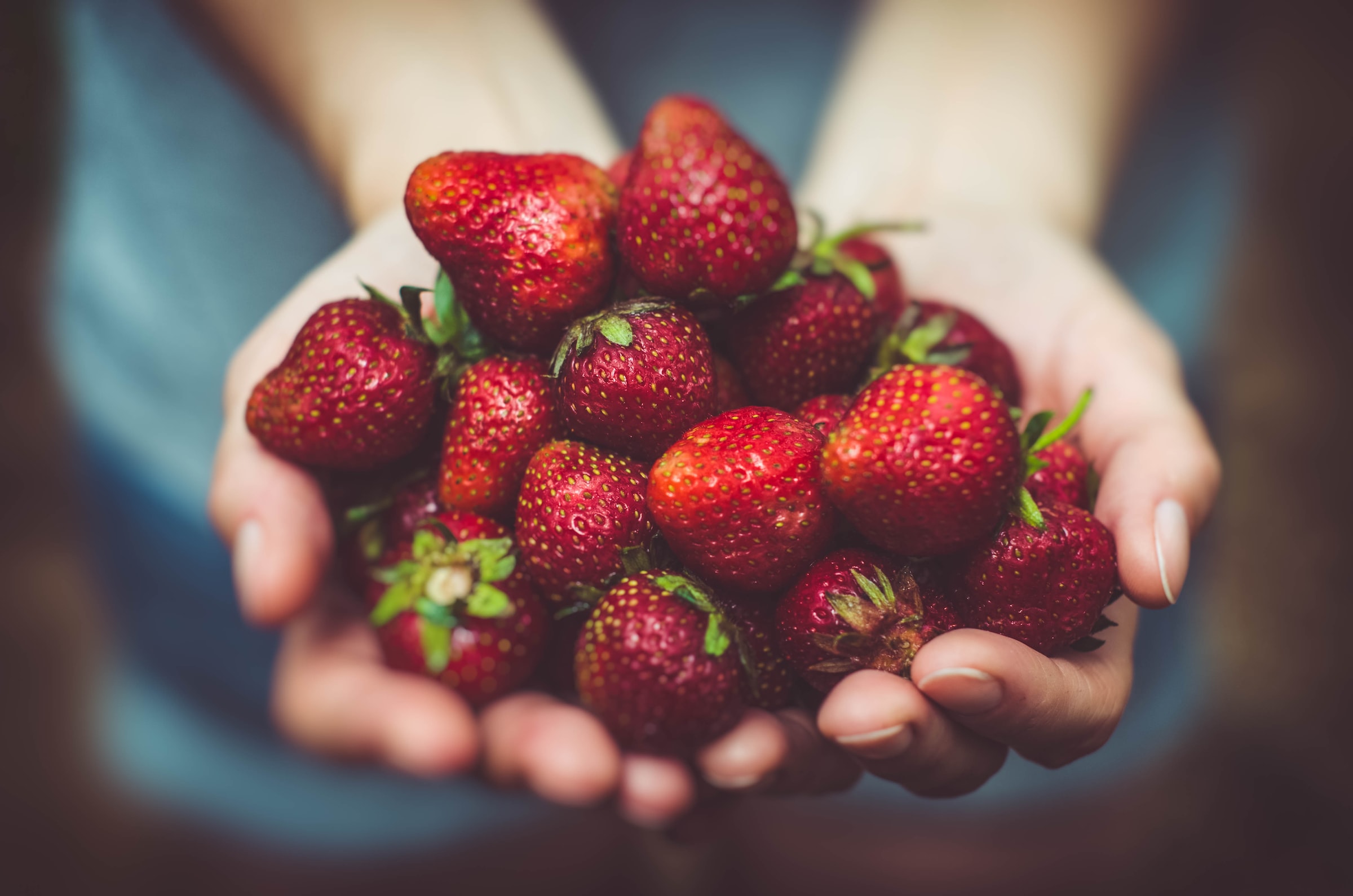
A great way to make your composition lively, visually appealing, and engaging is to include humans in the food. It works well to make people feel like they can relate to your food pictures. A child holding an ice cream, for instance, will bring back memories of childhood or of one’s own children.
Additionally, this kind of photography is extremely well-liked on social media platforms. In addition, the attire of the models may enhance the food images’ vibrancy and freshness. Models can be outfitted in bright colors like yellow, blue, pink, red, orange, green, and so on that go well with the food items. for invigorating summer drinks.
However, you don’t always have to use a model’s entire body to add a human element; Instead, you can use your lips or hands. Utilizing hand models will keep consideration from moving away from the food to the models.
5. Use props
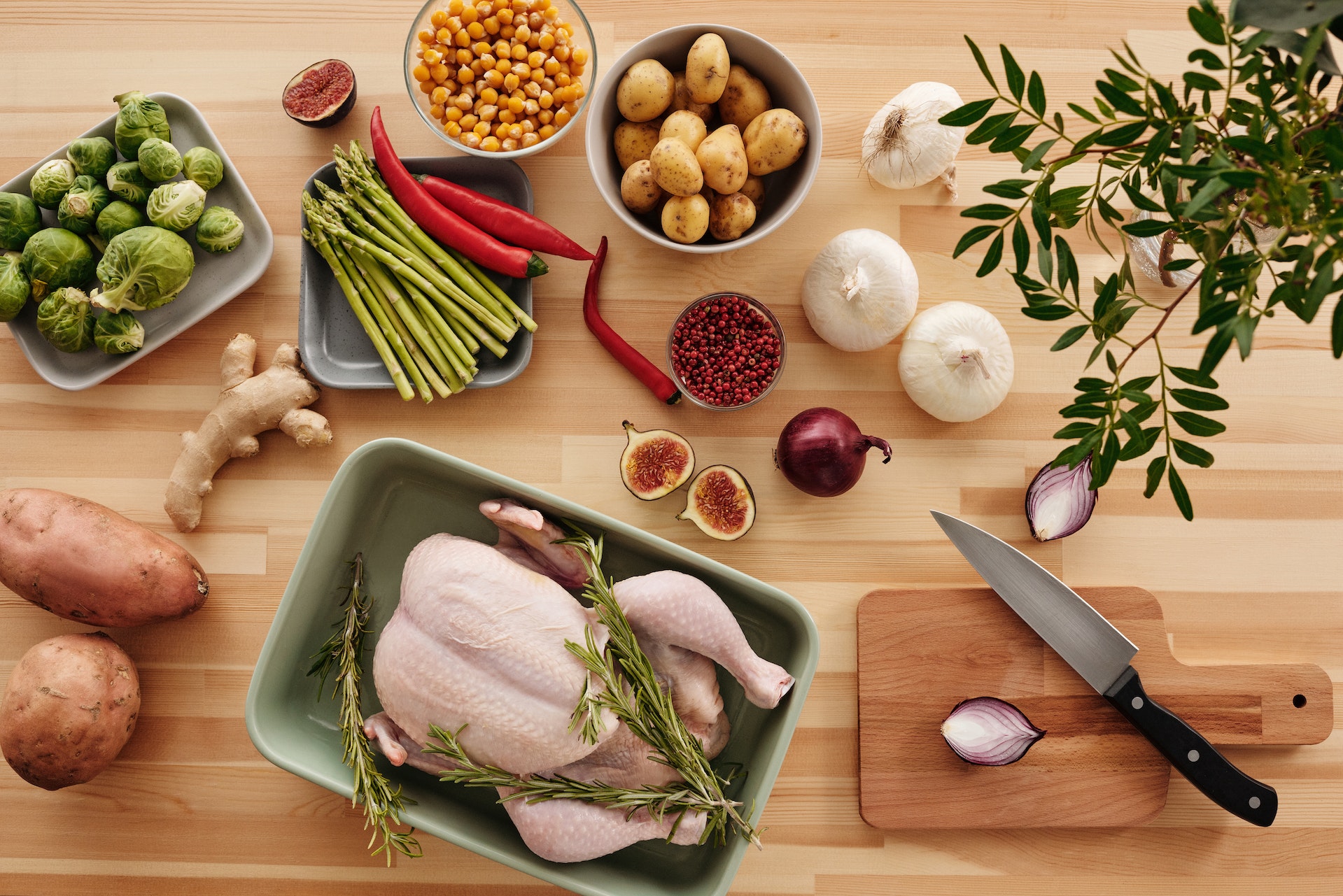
By incorporating props into the composition, any kind of photograph, including food photographs, can be visually enhanced. Instead of clogging the frame, you should use props that make your main dish taste better. You can also use props to add color to the composition if your food item has a pale color.
The components that go into making the food item make excellent food imagery props. For example, you can utilize spices, tomatoes, chime peppers, and so on., while taking pictures of your pasta, along the side of your dish. Flowers, fruits, fabrics, candles, and other items are also acceptable. to give the composition contrasting colors.
6. Keep the background simple
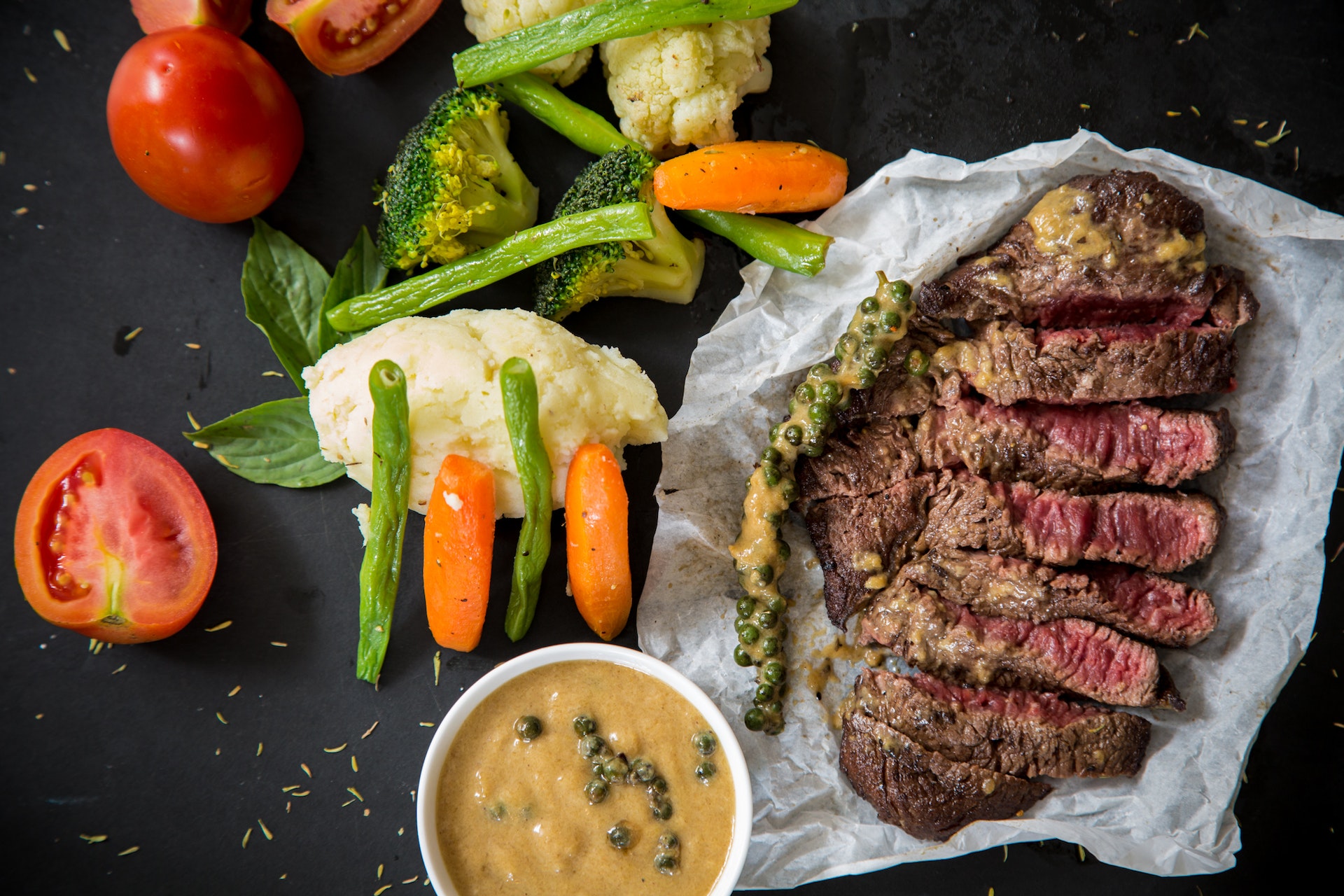
The background of a photograph has a significant impact on how appealing it is to the eye. The simplicity of the background keeps the viewer’s attention on the image’s subject. Therefore, it is recommended to keep the background as straightforward as possible.
The most common backgrounds for food photography are white, black, or wooden. In any case, you can likewise utilize a marble design foundation to add extra visual interest to the synthesis.
Nevertheless, regardless of the background you choose, ensure that it matches the food’s color. When you take a picture of food that has a dark color against a black background, your subject will blend in and not look appealing. Therefore, for light-colored food, use a light background, and for dark-colored food, use a dark background. Pick the wooden foundation assuming that you’re uncertain which one to utilize.
7. Take close-up or macro shots
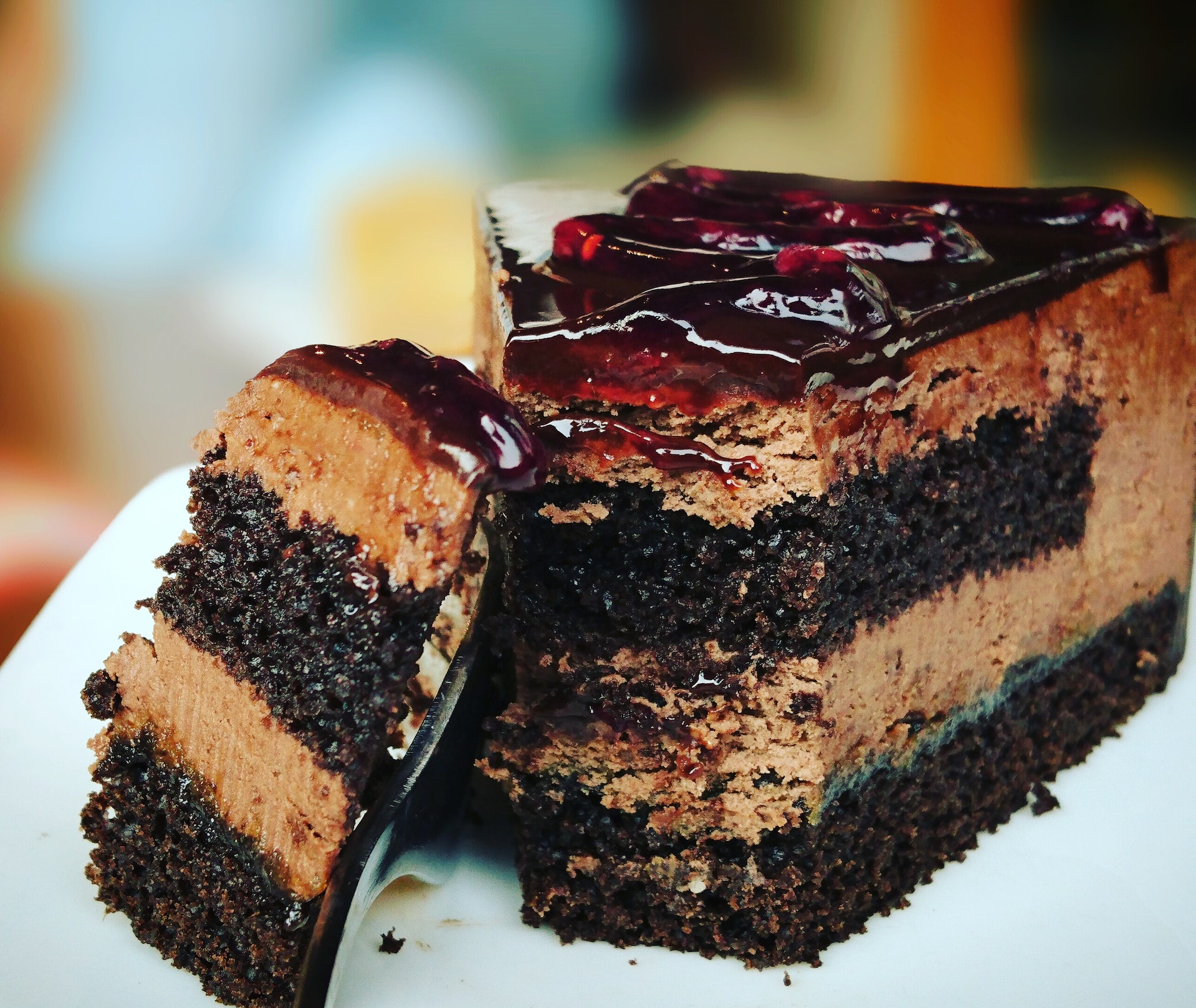
From a short distance, almost every food item looks fascinating. As a result, macro food photography can be used to show the texture and small details of a food item in a unique way. The body of strawberries, the patterns on salmon, cabbage, and onions, the dripping cheese on a burger, and so on give the images a different aesthetic.
However, you should use pristine cutlery when taking macro shots to ensure that there are no flaws. Also, check that everything fits perfectly inside your frame and is in perfect shape. Imperfections in the frame can become more apparent in zoom-in shots, making them less appealing than appealing.
8. Create a theme or a story
The best way to get people to connect more deeply with your images is through conceptual photography. A photograph’s theme has a significant impact on how viewers perceive it.
For example, rather than showing the drinks on a plain wooden table, you could show them held by some people in the shade of palm trees by the pool or beach in bright sunlight. This would help viewers feel more connected to the cool summer drinks.
By simply designing your composition around a theme, you can create festive, emotional, upbeat, and other moods. Therefore, contemplate your food items and conduct some preliminary research on them to generate concepts regarding the kind of theme or story that you can convey through your photographs.
9. Keep the writing straightforward
The impression of a well-organized frame is given by a straightforward composition. It will be simpler for your subject to be highlighted in the frame if your composition is simpler. Decorate your food items well to give them a delicious appearance. Props should be kept to a minimum or avoided entirely if necessary.
A straightforward organization assists with keeping the subject the star of the casing. Therefore, it is essential to steer clear of anything that could divert attention away from the primary food item and defeat the image’s intended effect. Virtual entertainment sites can likewise act as a wellspring of thoughts for simple food mixes.
10. Utilize empty space
Negative space is the empty space surrounding a subject in a composition. In order for the composition to avoid appearing cluttered and contain fewer elements that could be distracting, it is essential to leave some open space.
The advantages of negative space are numerous. Among them are:
- It calms the mind and eyes.
- enhances the subject’s focus.
- Make the image appear to be in order.
- enables the viewer to take a breather.
- enables writing or a logo to be inserted.
11. Get creative
An ordinary food item can be transformed into something delectable that everyone would drool over to taste with the help of a creative mind. To make your food photos stand out and add more creativity, try the following methods.
Reflection:
When incorporating a different point of view, it’s a great idea to include reflection. In order to properly capture the reflection and provide a distinct contrast, these photographs are typically taken in a dark environment.
Because they can position and angle the light to their liking, most photographers use plexiglass and artificial lighting with diffusers to get the best reflection.
Smoke:
Smoke also gives the impression of freshly cooked food and gives your image a dynamic element. For instance, the smoke from a slice of barbecued meat or sauteed vegetables, the steam from a cup of coffee or soup, etc. will make you feel the image’s warmth.
Keep in mind that because the smoke is too light, you need to use a dark background to prevent the smoke from being masked by the background.
Garnishing:
Your composition may differ depending on how you arrange your garnishes or design your plating. Food is first tasted by people’s eyes. Because of this, it’s important to make the meal look good enough to make people hungry.
You can include green herbs, red chilies, sesame seeds, carrots, cucumber, cherry tomatoes, and other ingredients to enhance the flavor, texture, and color of your dish.
Dark subject:
The majority of food images we see are bright either because they were taken in natural light or because they were artificially lit to look like natural light. As a result, dark food photographs offer a perspective and contrast that are uncommon.
The camera settings for dark food photography are quite simple; You must use a slow shutter speed and the lowest ISO possible. Underexposed images should be the primary objective. Additionally, use only one artificial light with a large softbox to create soft shadows and use a tripod to keep the camera steady.
Smoke, reflection, dripping, melting, splashing, suspending, and a host of other artistic effects can all be achieved with ease using the dark theme.
12. Enhance images with some basic editing
Because they may have issues with color, lighting, etc., every raw image needs some retouching to make it perfect and look professional. despite taking every precaution possible. Even if you don’t know how to use software like Adobe Photoshop and Lightroom, you can easily do some basic editing.
If your image is either underexposed or overexposed, for instance, you can adjust the brightness. You can raise the contrast of the image if the details are less prominent. In addition, you can increase the saturation to make the meals appear more vibrant if they appear somewhat faded.
Over-editing, on the other hand, will make the images appear unreal and may diminish their appeal. So, try to keep the editing to a minimum to make them look good and professional.
Your Options for Hiring a Professional Food Photographer
Professional food photographers should be considered for assistance if you want images of food for commercial use. Photographing food takes years of experience for professional food photographers. They are aware of the most effective photographic approaches for photographing food.
You can look into hiring a professional food photographer from the following sources.
Thumbtack: Thumbtack is a dependable app- and website-based service that is compatible with Android and iOS operators. Numerous freelance food photographers in your area can be found here. You can see their pricing, payment options, and work history in their profile. In addition, you can decide whether or not to hire them by reading their reviews. Simply put, transparency is maintained by this service.
Upwork: Upwork is yet another dependable resource for hiring freelance food photographers. Through this website, you can look for skilled food photographers in your area. Before hiring them, you can look at their portfolio, work history, and reviews. In addition, you can determine whether they are working on any other project or if they are free from work.
Studio for photography: The possibility that no freelance photographer has a studio is a major concern when hiring one. Therefore, if you want to shoot commercial food photography in a studio, you should talk to a photography company.
The most significant advantage is that photography studios are well-equipped and contain almost all of the technology necessary to photograph food, including white background photography, 360-degree photography, and 3D photography.
They can be paid by the image, product, hour, or even day. However, the daily cost will be between $1,200 and $3,500. To make the deal more cost-effective, you can pay them per image for both small and large quantities of images.
Outsource Your Food Photo Editing and Retouching Services
Commercial food photography and photo retouching go hand in hand as it is necessary to edit photos to make them appear polished and flavorful. Since so many photos need to be edited for commercial photography, it takes a lot of time for photographers to do it themselves.
Therefore, most photographers prefer to outsource the images for retouching services to save time. Besides, retouched images from photographers often add an additional cost, which raises the overall cost for restaurant owners or other clients. So, to make the retouching process cost-effective, clients can take assistance from photo retouching services.
On that note, you can consider Clipping Path Manager to get quality edited images at an affordable price. We offer photo retouching and color correction services that you may need for your food photographs. Depending on the complexity of your product, the prices may range from $0.25-$3.50.
Our team of more than 200+ professional editors is proficient enough to create professional quality images and work on large orders. Besides, we are strict about our fast turnaround period. So, you will receive the delivery within the estimated time. We also accept urgent orders within the 12hrs-24hrs delivery time. But for that, you have a different price range.
We offered you 2 images free trial for justifying the quality and getting a better experience. Please don’t hesitate to take this offer. We will be very happy if we got the chance to show our quality and creativity in your eyes 🙂
FAQ
- Which ISO is ideal for food photography?
The ISO for food pictures relies upon your lighting conditions. You can use an ISO setting of around 400 if you are taking pictures indoors in low light. To reduce visual noise, however, keep the ISO at around 100 when shooting outdoors and in well-lit conditions.
- Which shutter speed is ideal for food photography?
The kind of shot you want to take dictates the shutter speed. Your best screen speed for food photography ought to be something like 1/125 to exactly catch a moving component. However, images of still food can be taken on January 15th.
- Which lens is ideal for food photography?
The best lens for a food photo shoot is a 24-70mm or 24-105mm zoom lens because it can easily capture the textures and details of the food item by adjusting the focal length to take both close-up and macro shots.
- What kind of lighting is ideal for food photography?
For food photos, natural light is thought to be the best lighting. However, due to the excessive intensity of natural light, the food should be placed in a shaded area away from direct sunlight. This arrangement will assist with catching the normal shade of the food thing as well as the surfaces will be noticeable.
- Is food photography better with flash?
The built-in flash of the camera shouldn’t be used to take pictures of the food because it could make the food’s textures look washed out and make them disappear. However, studio flashlights with diffusers, such as strobes, can soften and even out the light.
- Is a softbox necessary for food photography?
Sharp shadows can be cast by direct light, ruining the composition’s aesthetic. Therefore, if you are using artificial lighting, you should set up your food photoshoot with a softbox to get a soft, diffused light.
- How can I get started taking pictures of food at home?
To practice food photography at home-
- Use a smartphone camera or a DSLR.
- You can get natural light through a window or an artificial light source like a lamp.
- Take a white cloth to use as a modifier or a white window curtain to use in front of the lamp.
- Utilize white cardboard to use as a reflector.
- Set your food items in a simple frame.
- Photograph from a variety of perspectives.
- What is the cost of food photography?
It’s possible that you’ll have to shell out between $150 and $500 per hour to hire a professional photographer. However, you can save money by paying for each image separately, which could cost anywhere from $75 to $250.
- How much does it cost to edit food photos?
The cost of photo retouching can range anywhere from less than one dollar to six dollars, depending on the service. In addition, the cost varies based on the kind of food and retouching required.
Final Thoughts
The aforementioned concepts and suggestions are beneficial to individuals of all levels, from novices to professionals. Work on learning the characteristics of each food category every day so that you can get creative with their angles, lighting setup, and composition style, as perfect food photographs, require creativity and extensive practice.
We hope that our guide has been of use to you and that you will use it to capture stunning food images for your upcoming project.

